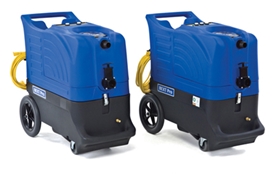This article was originally published by Housekeeping Solutions Looking at how green cleaning established itself in the jan/san industry, it's easy to see that much of its evolution began with chemicals. The goal was to encourage chemical manufacturers to develop products that are both effective and compiled from ingredients that have a reduced impact on the environment. Facility managers now also want the ingredients to be more sustainable, which generally means being derived from renewable resources instead of being petroleum based.
Once manufacturing caught up with these end user demands, green cleaning soon expanded beyond chemicals to include equipment and cleaning processes. Vacuum cleaners with advanced air filtration systems, chemical-free cleaning systems, low-moisture floor machines, certain restroom cleaning equipment, and even chemical-dilution systems have all become key components of departmental green cleaning strategies.



Another part of the green cleaning evolution specifically targeted carpet cleaning, which became greener and healthier with the aid of new technologies and cleaning and maintenance strategies. One such strategy is to base carpet cleaning more on need than on specific cleaning frequency.
For example, even though many building managers want carpeting in executive offices cleaned every month, these areas are not heavily soiled. Not only is monthly cleaning unnecessary, it is also costly and can have adverse implications on the environment. These areas would benefit from a deep cleaning only two to three times a year.
Looking at frequency is just one way facility managers are greening their carpet care. Learn more about greening carpet cleaning and green equipment by reading the full article:
http://www.cleanlink.com/hs/article/The-Evolution-of-Green-Carpet-Cleaning--14166




